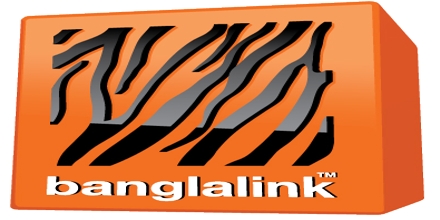Supply chain is one of the core functional departments of “Banglalink”. Throughout the whole internship report I wanted to give a brief idea about the process of supply chain and more specifically procurement unit along with a brief idea about my internship experience in Banglalink. Procurement unit deals with all the purchase that needs to conduct business operation of Banglalink. It encompasses with technical and non-technical unit. The main function of procurement is searching vendor, enlisting vendor, receiving purchase request, calling for work proposal, gathering vendors proposal, doing market research, negotiate with vendor, select the appropriate vendor through technical and financial evaluation and finally issued purchase order. In my entire internship period I was gone through several procedures of procurement activities like vendor enlistment, database management, vendor management and so on and gathered valuable knowledge and experience. While doing internship I figure out the focal activities of supply chain of Banglalink, their strength as well as some of the ways to improve the function. My internship experience enabled me to develop my interpersonal skills like communication skills, technical skills as well as gave a hint of understanding about corporate world which was the foremost objective of my internship.
Company Overview
Lunched in February 2005, based on a simple mission “Bringing Mobile Telephony to The Masses” which was cornerstone of its strategy; Banglalink changed the mobile phone status from luxury to a necessity. It has brought mobile telephone to the general people of Bangladesh by delivering affordable option for customers across a wide range of market segments. Though the journey of Banglalink is of a decade, the original infrastructure of the company was laid in 1989. Sheba Telecom (Pvt.) Ltd. was granted license in 1989 to operate in rural areas (Upazillas) and they expanded their business by obtaining their GSM license in 1996 and launched cellular service in the name of SHEBA in fall of 1997 under the joint venture of Bangladeshi Integrated Services Ltd. & Malaysian Techno Resources Industries. In September 2004 Telecom Ventures Ltd. Bought 100% of Sheba Telecom for USD 60 million and rebrands the franchise as Banglalink and launches it on February 10, 2005. Banglalink Digital Communication Limited (previously Orascom Telecom Bangladesh Limited) is fully owned by Telecom Ventures Ltd. (previouslyOrascom Telecom Ventures Limited) of Malta which 100% is ownedsubsidiary of Global Telecom Holding. Following business combination, in April 2011, between Vimplecom Ltd and Wind Telecom S.P.A, Vimplecom owns 51.92% of Global Telecom Holding. Vimplecom is one of the largest integrated limited providing telecommunication services in numerous regions such as Russia, Italy, Canada, Ukraine, Kazakhstan, Uzbekistan, Tajikistan, Armenia, Georgia, Kyrgyzstan, Laos, Algeria, Pakistan, Burundi, Zimbabwe, Central African Republic and Bangladesh. It headquarter is in Amsterdam. Banglalink growth over the preceding years have been fuelled with innovative products and services targeting different market segments, aggressive improvements of network quality and dedicated customer care, creating an extensive distribution network across the country and establishing a strong brand that emotionally connected customers with Banglalink. It attained 1 million subscribers by December 2005 and 3 million subscribers in October 2006. In less than two year which is by December 2007, Banglalink overtook Aktel (Now Robi) to become the second largest operator in Bangladesh with more than 7.1 million customers. According to its website information Banglalink Currently has 30.9 million subscribers as of December 2014, representing a market share of 25.47%. Head office located in Tigers’ Den, Gulshan-1, Dhaka, Banglalink employed more than five thousand people. In every aspects of its business operation it corresponds with the culture and value of Bangladesh with constant innovation in its service and business operation. The logo of Banglalink resembles the Royal Bengal Tiger; the symbol of nations pride. The new slogan of Banglalink “NotunKichuKoro” translated “Start Something New” motivates its customer to bring positive change in their life by doing innovative things. As telecommunication industry of Bangladesh is almost a matured and saturated industry the companies are now focusing on non-price competition by developing new techniques to capture market share. Being the second largest telecom company, Banglalink is also trying to capture more market share as well as more customer base by taking different promotional activities, providing lower service rate, attractive value added services, strong network coverage, newly launches faster 3G in affordable rate to the mass and providing better customer care service. To ensure all that it needs a huge business operation and for that Banglalink has a number of departments who works together to bring the best for the company. Some of the core functional departments of Banglalink are Technical department, Human resource department, marketing department, customer care department, Finance department. Every department has several sub-departments or sub-units. Banglalink maintained a proper corporate culture to make sure an effective cross-functional relationship for an efficient business operation.
Vision, Mission, Goal, Objectives and Slogan of Banglalink
Vision: “Banglalink understands people’s need best and will create and deliver appropriate communication services to improve people’s life and make it easier”
Mission: “Bringing mobile telephony to the masses”
Goal: Banglalink’s goal is to make the cellular phone affordable to the people of every level with lower cost.
Objectives: The main objective of Banglalink is to serve better network and coverage to its valuable subscribers and improve their communication level. Core departmental objectives to achieve Banglalink’s Vision and Mission:
- Provide effective and efficient service to ensure right product and right service to right place at right time in right price to right customer and user department.
- Ensure maximum quality at minimum price by the means of cost efficiency.
- Maintain ethical and legal standard in every sphere of supply chain activity.
- Maintain a management culture of high performance and strong accountability.
- Treat vendors with courtesy, respect and consideration at all the times.
Slogan: “Start Something New”
Literature Review on Supply Chain Management in Telecommunication Industry
According to the Investopedia website, Supply Chain Management is the network created amongst different companies producing, handling and/or distributing a specific product. Specifically, the supply chain encompasses the steps it takes to get a good or service from the supplier to the customer. Supply chain management is a crucial process for many companies, and many companies strive to have the most optimized supply chain because it usually translates to lower costs for the company. According to Janat Shah (2009), supply chain encompasses all activities involved in the transformation of goods and services from the raw material stage to the final stage, when the goods and services reach the end customer. He added, supply chain management involves planning, design and control of flow of material, information and finance along the supply chain to deliver superior value to the end customer in an effective and efficient Manner.
Supply Chain Management (SCM) involves the coordination of all supply activities of an organization from its supplier and delivery of products to its customers. It’s essentially the optimization of material flows and the associated information flows involved with an organization’s operations.
Supply Chain Management (SCM) includes not only supplier and buyer, but also the intermediaries such as the supplier’s suppliers and the customers’ customers. It is the coordination of supply activities of an organization from its suppliers and partners to its customers. For most commercial and not for profit organization we can distinguish between upstream supply chain and downstream supply chain.
An organization’s supply chain can be viewed from a systems perspective as the acquisition of resources (inputs) and their transformation (processes) into products and services (outputs) which are then delivered to customers. Such a perspective indicates that as part of moving to ebusiness, organizations can review the transformation process and optimize it in order to deliver products to customers with greater efficiency and lower cost.
The position of the system boundary for the SCM extends beyond the organization- in involves not only improving the internal processes, but also processed performed in conjunction with suppliers, distributors and customers. The process perspective has also a strategic importance that provides great opportunities to improve product performance and deliver superior value to the customers. As a result, Supply Chain Management can dramatically have an impact on the profitability of a company through reducing operating costs and increasing customer satisfaction and so loyalty and revenue. Upstream supply chain is the transactions between an organization and its suppliers and intermediaries, equivalent to buy side e-commerce. Downstream supply chain is the transactions between an organization and its customers and intermediaries, equivalent to sell side ecommerce. For the companies that have first-tier suppliers, second-tier and even third-tier suppliers or first-, second- and higher-tier customers maintain a supply chain network. A supply chain network is the link between an organization and all partners involved in multiple supply chain.
Effective supply-chain management for telecommunication is a powerful tool for business transformation. It can dramatically increase a telecommunication industry’s profitability while simultaneously improving customer service. Increase in the competitive environment in Telecommunication industry, customer demand for cheaper product with better quality service. Hence, Telecommunication companies need to operate efficiency for their supply chain management in order to perform the best performance. The supply chain management practice has mostly been analyzed as a strategy that to gain competitive advantage in business performance. While today’s competitive environments are forcing businesses in this direction, the steps to take are often not evident. Problems of supply-chain management can be complex, and their solution requires special knowledge and experience. Without an effective supply chain Management system a organization specially organization of telecommunication industry where competition among the organizations are intense will have to face some serious problems like unable to meet the demand of market and consumer, increasing expense in executing a business operation, decreasing the quality of services they provide, losing the position of market share, decreasing revenue hence profit, diminishing market reputation for choosing wrong suppliers and vendors and facing legal obligation from the regulatory bodies.
An effective supply chain involves with many things which needs to work simultaneously and systematically in order to make the whole supply chain system useful for the continuous growth and development of the organization. It consists of effective management team with capability to forecast the future demand, ability to find out opportunities, strengths, challenges and threats. An efficient management to execute the supply chain function like sourcing vendor, managing vendor, forecasting the need and demand of market, gaining experience and insight of market through market research, using the resources of organization effectively, reducing inventory cost by developing proficient logistic and warehouse managing system, creating proper distribution channel. In order develop an effective supply chain automation of the whole system is also important as well monitoring from the compliance is also a notable criteria to make it constructive.
Overview of Supply Chain Management of Banglalink
Supply chain department is one of the core functional departments of Banglalink which works under the umbrella finance. In Banglalink function of supply chain is so important for its whole business operation. Supply chain department has to co-ordinate with each and every department of the Banglalink in order to run its operation effectively and efficiently. Every purchase of Banglalink has gone through the supply chain. In order to work effectively supply chain is divided in several units. They are supply chain-Procurement, supply chain- strategy and planning, supply chain- reporting and performance management, supply chain-logistic, supply chain-warehouse, supply chain-contract management, supply chain- SIM and Scratch card operation.
Supply chain- procurement is the most important unit of supply chain. Procurement is the acquisition of goods and /or services at the best possible payment terms, through selection and solicitation of sources, preparation and award of contract, in the right quantity and quality, at the right time, in the right place for the direct benefit or use of the organization. By procurement, in simpler terms, we understand something that encompasses the whole process of acquiring property and services. It begins when the department identifies a need and decides on its procurement requirement. The procurement division in Banglalink works under the accounting and finance department and plays a major role in maintaining a good collaboration with other departments within the organization. Procurement team works under two sections, namely:
- Procurement Technical
- Procurement Non-technical. Procurement Non-technical again divided into several sub-units such as; direct sourcing and indirect sourcing. The activity, purchase, and functions which are directly related to the core operation of Banglalink are fall under direct sourcing and the others fall under indirect sourcing. An example will make it easier to understand. The purchase of the Antenna for BTS falls under direct sourcing and purchase of T-shirt for promotional campaigning falls under indirect sourcing.
As I mentioned earlier, procurement department plays a vital role of the organization and the technical team plays one of the most crucial functions to expand its network capacity. This team primarily works for purchasing goods concerning civil construction such as equipments, towers, generators, BTS, base stations and others. Technical team mainly receives request from Network Deployment for their huge requirement regarding network expansion.
For example, when Network deployment identifies the need for network expansion in certain areas and thus require setting up of BTS tower and antennas in both Greenfield and Rooftop, they sent Purchase Request to Technical team. Vendor will start work only when they are supposed to receive the Purchase Order from procurement. As a result, the user departments always need to rely on procurement team for any type of request for technical purchase as
Procurement team has the authority of Purchase Order creation. Procurement Non-Technical Procurement: Non-Technical deals with only purchase of nontechnical materials needed by the various functional units of Banglalink. Purchase Requests are raised by the following departments: 1) Marketing 2) Sales 3) Admin 4) IT 5) Customer Care Department (CCD) 6) Human Resource Management.
I was an intern of the whole Procurement unit, but due to the higher work pressure I worked with the direct sourcing team. The team consisted of mainly two members with the Manager being Mr. MD. Majid Ul Alam and Ms. Tasnuv Jahan. As the function of sourcing is directly related with every other units of supply chain that’s why others teams need to coordinate with sourcing team.
The three main functions of sourcing are
1) Find out the pool of right vendors at the right time for placing before the procurement team as per the requirements of user departments.
2) Vendor enlistment
3) Vendor management.
Before knowing the details about working function of direct sourcing it is important to know about the flow of function of supply chain-procurement. It starts with the submission of purchase request (PR) and ends with issuing purchase order (PO). In between there are several steps to execute the whole function.
The elaboration of sourcing functions is kind of this, when any user department raised a PR (Purchase Request) to the procurement; they tell them to confirm it from the budget team whether there is sufficient fund for his purchase request. If the purchase request is for a very important job than the budget team has to create fund if there is no fund for that job. After confirming the adequacy of fund the procurement department calls for sourcing unit to find out the pool of vendors. There are several ways sourcing unit gathers the pool of vendors. Some vendors directly come to Banglalink for doing business with Banglalink, some are gathered by individual recommendation like recommendation of a colleague or government officials, some are from direct market search or indirect market search (like search from internet), some are selected by using sole-source method which means this vendor is the only entity for a typical kind of job or service; There are no other alternatives. There are also some vendors to whom Banglalink has done bulk amount of business. Those vendors come automatically in the pool of vendors (Like Huawei, Nokia-Siemens Network, Ericksen). After gathering the pool of vendors sourcing moves towards vendor enlistment. Banglalink gives so much emphasis on Vendor enlistment. The objective of this is, the current regulatory environment demands that companies understand who is conducting business on their behalf and who their Business Partners are. Non-compliance with anti-bribery regulations (local or international) by Business Partners poses significant financial, legal and reputational risks for a company, as the company can be held accountable for the actions of those Business Partners. “VimpelCom”the parent company of Banglalink is fully committed to integrity in all aspects of its business.The objective of the Vendor Compliance and Screening Procedure is to ensure that Banglalink only does business with suitable Business Partners that are willing to adhere to Banglalink’s anti-corruption compliance expectations, and to protect Banglalink from the legal and reputational risks of engaging with Business Partners associated with bribery, corruption, fraud, or other misconduct. This procedure complements and reinforces processes to assess the performance of certain vendors on performance relating to protecting human rights (e.g. child and forced labor), the environment and other ethical issues. Therefore, a vendor has to be valid and sound in terms of legal, technical, social and economic aspects. Sourcing team collect vendor’s legal documents like trade license, VAT certificate, TIN certificate, certificate of incorporation as well as its company profile, work experience certificate and evaluate them to make sure it has the eligibility to be a business partner of Banglalink.
Banglalink also judge a business partner on the basis of risk associate with dealing with it. To assess the risk it looks for some factor like whether any government official involves with the business partner or not, whether business partner has any charged against it from the court, types of business activities, ways of compensation, nature of transaction etc. By judging all those factors a vendors can fall in three category; High risk vendors, medium risk vendors and low risk vendors. For specific types of stage Banglalink follows definite types of enlistment procedures. The overall objective of vendor enlistment procedure is mainly to preserve business reputation of Banglalink. After vendor enlistment the vendors and information regarding them are listed in the organization’s vendor database for future use. Every vendors are categorized by different types depending on their nature of business activities; such as- civil work vendor, power connection vendor etc.
When vendor enlistment is done sourcing submitted the pool of vendors for a specific job to the procurement or other team those who are responsible for further work progress. After vendor enlistment an RFQ (Request for Quotation) has been sent to them through e-mail mentioning the SOW (Scope of Work).
After getting the RFQ vendors submitted their quotation. Than the procurement team evaluate their proposal based on two criteria; Technical criteria, Financial criteria. In order to get the work order or purchase order a vendor proposal has to fulfill both technical and financial criteria. As Banglalink give emphasis on the quality of job so that technical factors carry the same importance just as financial factor. Technical criteria is evaluated mainly by user department and financial criteria is judged by procurement department. After getting the feedback about technical and financial criteria procurement select a vendor primarily. After that further negotiation starts. As Banglalink is a big organization so they have some privilege. They can bargain with the vendor and negotiate to reduce the price further. The procurement uses market research to establish a benchmark for a product or service and they judge vendor proposal based on their benchmark. After final negotiation the purchase order has been issued to the vendor. At this point contract management has involved with the further procedure. They make the contract so that the relationship between Banglalink and The vendor becomes effective. It acts as a safeguard from Banglalink point of view as it removes the risk of contract breach or fraud. Procurement follows mainly three methods to purchase products or services. These are fixed agreement, bid and tender. When the products or services which price are fixed in the market and Banglalink buys it with that price and have an agreement with the vendor to do so in the future than it called the fixed agreement purchase. When the purchase amount is less than 8 million Taka than Banglalink follows bid method to execute the purchase. In the bid method the vendors are submitted their quotation and the highest bidder gets the job. Tender is almost similar to the bid although in this method more documentation and more authorization is needed.
Vendor management is also a significant function which is done by sourcing unit to make sure vendors continuously add value to the Banglalink by delivering quality service. The process of vendor management includes selecting important vendors from the point of view of Banglalink, monitoring their performance, evaluate their performance and give feedback about their performance. In selecting important vendors Banglalink takes three factors; 1) Value of purchase order issued to every vendor 2) Number of purchase order issued to every vendor 3) Business criticality. In addition to that,some vendorsare also selected by the proposal of user department. The main objective of Vendor evaluation is to identify the vendors who are not providing the service properly and find out the area where they need to improve. It is so important because without the effective vendor service it is not possible to Banglalink to provide effective service to the end user.
The other functions of supply chain units are briefly as follows:
Supply-Chain warehouse: The function of warehouse is to store all the technical and nontechnical material, equipment and tools in an efficient way so that it can be placed to the right place at right time in right quantity. Banglalink has 13 warehouse situated in different part of the country. They are Ashulia warehouse, Barishal warehouse, Bogra warehouse, Comilla warehouse, Chittagong warehouse, Faridpur Warehouse, Khulna warehouse, Mohakhali warehouse, Mymensingh warehouse. Rajshahi warehouse, Rangpur warehouse, Sylhet warehouse and Khustia warehouse.
Supply- Chain Logistic: The function of logistic is to distribute the product and service to the user. Banglalink is operated country wide. In order to remain competitive in the market it needs a solid distribution channel to ensure the consumer as well as the user department gets the right product and service at the right time. Logistic meet up this criteria.
Supply Chain SIM and SC operation: SIM (Subscriber Identification Module) and SC
(Scratch Card) are the two main items for Telecommunication Company. Based on their importance there is a separate unit called SIM and SC operation closely worked with logistic and warehouse to ensure the availability of SIM and Scratch Card in the market so that Banglalink does not have to lose important market share and revenue. Its main function is to maintain adequate amount of SIM and Scratch Card in the warehouse to meet the market demand.
Supply Chain-Planning and Performance Management: The main function of this unit is to prepare the plan regarding the whole supply chain. Making rules and regulations, creating terms, developing strategies and reporting to the higher authority. As a whole the efficiency and effectiveness of supply chain depends on the success of each and every unit working under it.
Strength of Supply Chain:
Banglalink supply chain department has some unique characteristics and area of strength which makes it more effective and efficient. These are
1) Banglalink works with a large number with vendors. It has a huge pool of vendors for every types of job either it is for BTS installation or serving the tissue box. It gives them right of choice and power of negotiation.
2) In Banglalink the compliance gets the high priority. Compliance is maintained in an proper manner so that every vendor has to come by appropriate channel which ensure less number of corrupt vendors.
3) Being a one of the large organization Banglalink enjoys a comparative advantage over its vendors. As they procure bulk amount of products and services from the vendors they can ensure economies of scale by negotiate with the vendor. Vendors willing to work with Banglalink for its brand reputation.
4) The supply chain department is systematically defragmented. Every sub-unit has its welldefined responsibility. The cross functional relationship within the departments is maintained effectively so that lead time becomes shorter for planning and executing a task.
5) Supply chain department has research based and knowledge oriented teams who have better experience about the market. It enables them to judge the prices and qualities of the products and services offered by the vendors.
6) Proper distribution channel to meet the demand of market accompanied with 13 warehouses and effective logistic and SIM and SC operation around the country makes it much easier to compete with other competitors.
Learning and Achievements
Through out of my entire internship period I learned lots of things in Banglalink. First of all it gave me the first exposure to corporate environment and culture. By working here I improved my communication skills which I regard the best achievement of my internship period. I have to deal with a number of vendors through e-mail, phone and face to face conversation in order to convince them and make them understood about different terms and query. Next was, improving my technical skills. Here most of the time I needed to work on Microsoft office 2010 software. I worked on Excel, Word and Outlook. Being an MNC (Multi National Company) the main mode of communication in Banglalink is e-mail. Banglalink uses in-house network and Microsoft outlook software to communicate with every respective person. Every employee has a unique organizational e-mail address which they use to communicate with each other inside and outside of the Banglalink. I also had a mail address through which I communicate other employee and vendors. In excel I used mostly VLOOKUP and Pivot table to perform a task and make any report. I also learned corporate manner and etiquette. I did not bind myself only in supply chain department rather whenever I get time and scope I went to other department like accounts payable, VAT and Tax, revenue and treasury, marketing, compliance, human resource, organizational development to gather knowledge and experience. I learned how to build professional network which now-a-days is very important for professional success. Again, by working in Banglalink I learned about many thing about telecom industry, regulatory procedures regarding doing business in Bangladesh etc. which will certainly help me in my future career plan. Finally, I must say Banglalink and its well organized employee team helped me to improve my overall interpersonal skills and professional attitude which was the main objective of my internship.
Value Addition By Me
Although I worked here for only three month and from organizational point of view my contribution is minimal but still I always search for the scope where I can add value to Banglalink. In my Due Diligence project at the beginning time error from vendors were in a high ratio as most of them could not realized the terms and questions properly. It had caused longer times to accomplish vendor enlistment procedure. Therefore I decided to find out the problems and areas where they made most of the mistakes. After find out the problems I figured out that if I can illustrate the terms in the mail than it will easier for them to understand the terms and questions. Accordingly I explained the difficult terms in the mail body and got the positive result immediately. The numbers of mistakes became less hence it took shorter time to enlist a vendor.
Findings and Recommendations:
Although Banglalink is a well-organized and well developed organization with state of the earth technology but in my perspective there are some fields where they can improve. Firstly, I want to mention about the process of “Due Diligence”. In “Due Diligence” process for vendor enlistment Banglalink took both hard copies and soft copies which eventually took a longer time for closing up the whole process. Again it needed lot of space for the bulk amount of papers which were submitted by vendors. If they can automate whole system than it will certainly saves time and space. In this way vendors will submit the soft copies and for the legal papers which are important they will submit both hard and soft copies. Again, in this matter the intern should give more autonomy so that they can customize their mails which are sent to the vendors. In this way the errors from vendors can certainly minimize. Finally, in my perspective, there was shortage of personnel in sourcing and compliance department which need to be fill up to make the proceedings more efficient.
Conclusion:
In conclusion I want to say, it was a pleasure for me to work in Banglalink. In my view, Banglalink and its employee team maintain corporate excellence and professional attitude in every sphere of its business operation which enables Banglalink to sustain and become a company of people choice.
















